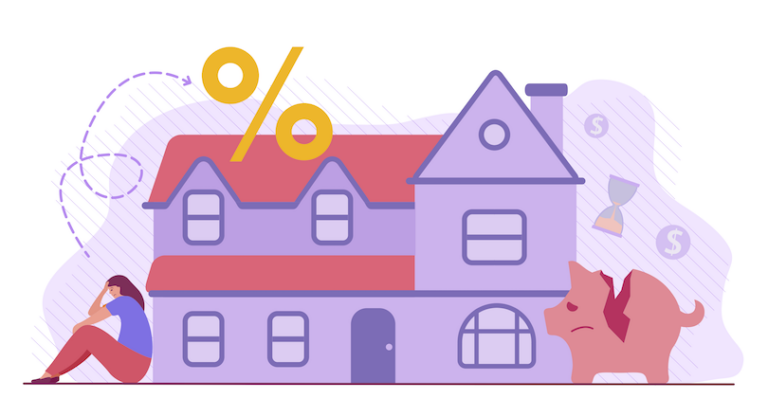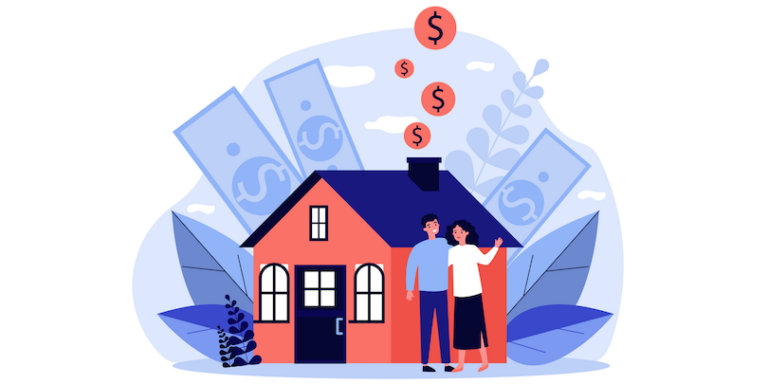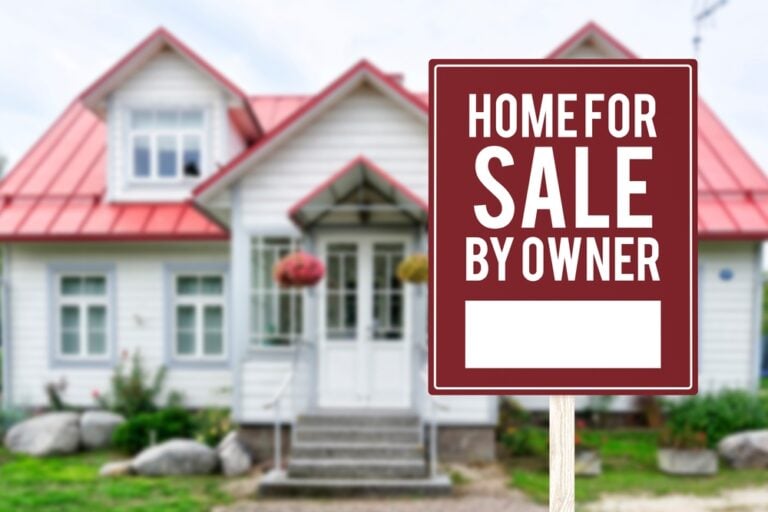
While many rent vs. buy calculators give a brief overview of costs, most don’t consider all of the monthly expenses involved in purchasing a home. From repairs and renovations to HOA fees and landscaping, a true cost analysis of homeownership should include all the variables.
We surveyed 1,000 homeowners to learn not only how much they’re spending to maintain their homes, but also gain a better sense of the incalculable costs and benefits of homeownership.
For those looking for hard and fast numbers, we found that the average homeowner spends approximately $2,676 on maintenance and repairs, $6,649 on home improvements, $2,600 in property taxes, and $1,228 on homeowners insurance every year.
However, these numbers don’t tell the whole story.
Our study dives deep into Americans' general feelings about homeownership, homeowner savings, time investments, renovation projects homeowners are financing, as well as tax and insurance data broken down on the state level.
What are the biggest regrets homeowners have?
Are homeowners taking on too much debt to finance their home projects?
What renovations and repairs are homeowners planning in 2019?
Which states are the most expensive in terms of property taxes and home insurance premiums?
Read on for answers to these questions and more!
Key Findings
- The average U.S. homeowner spends $2,676 on maintenance and repairs, $6,649 on home improvements[1], $2,600 in property taxes[2], and $1,228 on homeowners insurance[3] every year.
- 59% of homeowners making renovations are using some combination of credit cards, personal loans, and home equity loans to fund their projects
- The biggest regret among homeowners is the amount of maintenance their properties require — 1 in 4 homeowners have less than $500 saved for home repairs
- In spite of the costs, 65% of homeowners said they’ve never felt home buyer’s remorse, and only 24% of respondents reported feeling stressed or anxious about owning a home
- Millennials are planning almost 50% more renovations than Baby Boomers, but these projects are causing them more stress and surprises than any other generation. They’re also three times as likely to use a personal loan, and twice as likely to use a credit card to finance their renovations.
- Where you live matters: On average, New Jersey homeowners pay five times more in property taxes on a $206,000 home than they would if they lived in Alabama
- Location matters in terms of homeowners insurance costs too! Homeowners in Florida pay an average of $3,575 in annual premiums, compared to an average of $589 in Vermont. View our full list of average property taxes and home insurance premiums by state.
Key Insights & Analysis
1 in 4 Homeowners Have Less Than $500 Saved for Home Repairs
PITI (Principle, Interest, Taxes, Insurance) is the standard metric the mortgage industry uses to determine how much home you can afford, but home buyers also need to account for the time and money required for maintenance and repairs.
Our survey found that the average homeowner pays $2,676 on maintenance and repairs each year. That translates to about 1.2% of the home’s value — and a whole lot of trips to Home Depot. Maintenance is having a serious impact on homeowners’ savings: 1 in 4 homeowners indicated they have less than $500 saved for home repairs.
In fact, the biggest source of home buyer's remorse was the amount of maintenance new homes require.
While many homeowners believe a flat fee mls listing is the best way to save when selling a home, a top-ranked or low commission real estate agent can be a better alternative.
57% of homeowners will spend more than five hours a month on home maintenance, repairs and renovations, a time investment many homeowners didn’t account for. A number of factors can influence how much maintenance is required, including the home's age, weather, and location.
However, the most common home repairs are universal headaches: painting and staining, plumbing leaks, HVAC maintenance, and water heater repair. Per our survey, 3 in 4 homeowner will need to repair their HVAC or water heater if they’ve lived in the home for more than 10 years.
A full list of the most common repairs and their average costs can be found below:
The most common repair projects run relatively cheap, but home buyers should be wary of buying a home with a history of more expensive problems (water damage, structural issues, septic tank leaks, or broken sewer lines). The all-important seller’s disclosure details previous issues, so read up.
Of course, there are additional expenses outside of maintaining the home itself.
Our survey found that 77% of homeowners have had to replace or repair a major appliance, and that number jumps to 88% for homeowners who’ve lived in a home for more than 10 years.
Most respondents indicated having to replace multiple appliances, so new homeowners should budget appropriately.
We also found that 67% of homeowners pay for ongoing services to maintain their property. Homeowners associations, pest control, and landscaping services are some of the most common, recurring expenses.
The cost of these services will vary depending on frequency, but homeowners associations average $2,400 to $3,600 in annual fees according to Realtor.com.
In spite of the additional upkeep required, most homeowners don’t experience buyer’s remorse.
We found that 65% of respondents said they’ve never felt home buyer’s remorse, and only 24% of respondents reported feeling stressed or anxious about owning a home. The majority of respondents felt happiness, comfort, security, and a sense of pride.
Homeowners who’ve lived in their home for less than four years reported higher rates of home buyer’s remorse. 43% of millennials were surprised by the costs of maintaining their home — compared to 25% of Baby Boomers — indicating new home buyers often don’t realize the true cost of homeownership.
59% of Homeowners are Financing Projects With Credit Cards, Personal Loans, or Home Equity / HELOC Loans
While homeowners appear to be managing their repairs and stress well, renovations can cost homeowners thousands. One study found that homeowners spent an average of $6,649 on home improvements in 2018.
75% of our survey respondents indicated they’d be making renovations in the next five years. Of those 750 homeowners, 59% said they’d be financing their projects with a combination of credit cards (29%), personal loans (17%), or home equity loans (18%). Only 41% of homeowners are financing their projects with their savings alone.
1 in 3 homeowners planning renovations will use financing alone, which can lead to mountains of compounding interest if the debt isn’t paid off quickly.
While home equity loans tend to have lower interest rates, averaging 5.76% APR, credit cards currently average 17.5% APR, and personal loans can range between 10% and 30% APR depending on the borrower's credit score.
We know from our 2019 Credit Card Debt Report that almost half of credit card users (47%) carry a balance from month to month, and 72% of credit card debt holders carry at least $1,000. While appropriate for small projects, high-interest debt like this can sink homeowners into a serious hole when their spending gets out of control.
Even with a lower interest rate home equity loan, homeowners opting for 30-year loan periods can end up paying more in interest than the initial amount borrowed. If homeowners want to avoid paying thousands in interest 15-, 10-, and 5-year home equity loans are worth exploring.
What kinds of improvements are homeowners planning? Everything from landscaping projects to kitchen remodels.
The most popular projects include landscaping, new flooring, kitchen remodels, bathroom remodels, and new patios or decks. These projects aren’t cheap: the average kitchen remodel costs $22,134 and bathroom remodels cost around $9,723.
What’s more, there’s a significant difference between what homeowners anticipate spending on planned projects and actual reported spending.
Homeowners often spend two or three times as much for a renovation project than budgeted.
"Even seemingly small projects that you do yourself with no labor costs wind up costing more than you expect. You oftentimes have to buy or rent a tool to do a repair and even seemingly small/cheap repairs wind up costing a good buck."
—John Frigo, new homeowner
Our survey found that 1 in 3 homeowners were surprised by the cost of maintaining their home.
Where You Live Matters (A Lot)
"Location, location, location"
Taxes are an unavoidable part of homeownership, and they’re an important factor in the infamous "rent vs buy" debate. The average homeowner in the U.S. pays 1.12% in property taxes each month, but these taxes are determined at the state and local level, so future homeowners need to consider these types of location-specific costs before buying.
By accounting for the median home values and the effective property tax rate for each state, we can determine the states where homeowners pay the least (and most) in taxes.
These property taxes add up quickly — a homeowner in New Jersey pays five times as much on $206,000 home than a homeowner in Alabama!
Homeowners in New Jersey, New Hampshire, Connecticut, Massachusetts, and New York are hit hard by high property values and above average real-estate tax rates.
However, Carolyn L. Dessin, Professor of Law at University of Akron notes:
"It’s important to remember that level of tax is often tied to level of service — low taxes may mean weaker street maintenance, less funding for schools, etc."
Similar rules apply for homeowners insurance: Homeowners in states that are prone to natural disasters like tornadoes and earthquakes tend to pay the most for home insurance.
Homeowners can tweak their insurance policy to accommodate their budget by increasing their deductible or shopping around, but location is the biggest factor insurers use to determine risk — and costs.
A higher deductible also creates greater risk for the homeowner; when something serious does go wrong, you’ll be footing more of the bill.
Methodology
The proprietary data featured in this report comes from an online survey commissioned by Clever Real Estate and conducted by Pollfish. In total, Pollfish surveyed 1,000 homeowners about their feelings towards homeownership, maintenance, and renovations, as well as the expenses they incur. The survey was distributed using organic sampling on April 22, 2019.
Secondary research was gathered from the sources below.
Sources
- Home Advisor: True Cost of Homeownership
- Wallet Hub: Property Taxes by State
- Insurance.com: Average Cost of Homeowners by State
Contact
6358 Delmar Blvd suite #300
Saint Louis MO 63130.
P: 1-833-2-CLEVER




